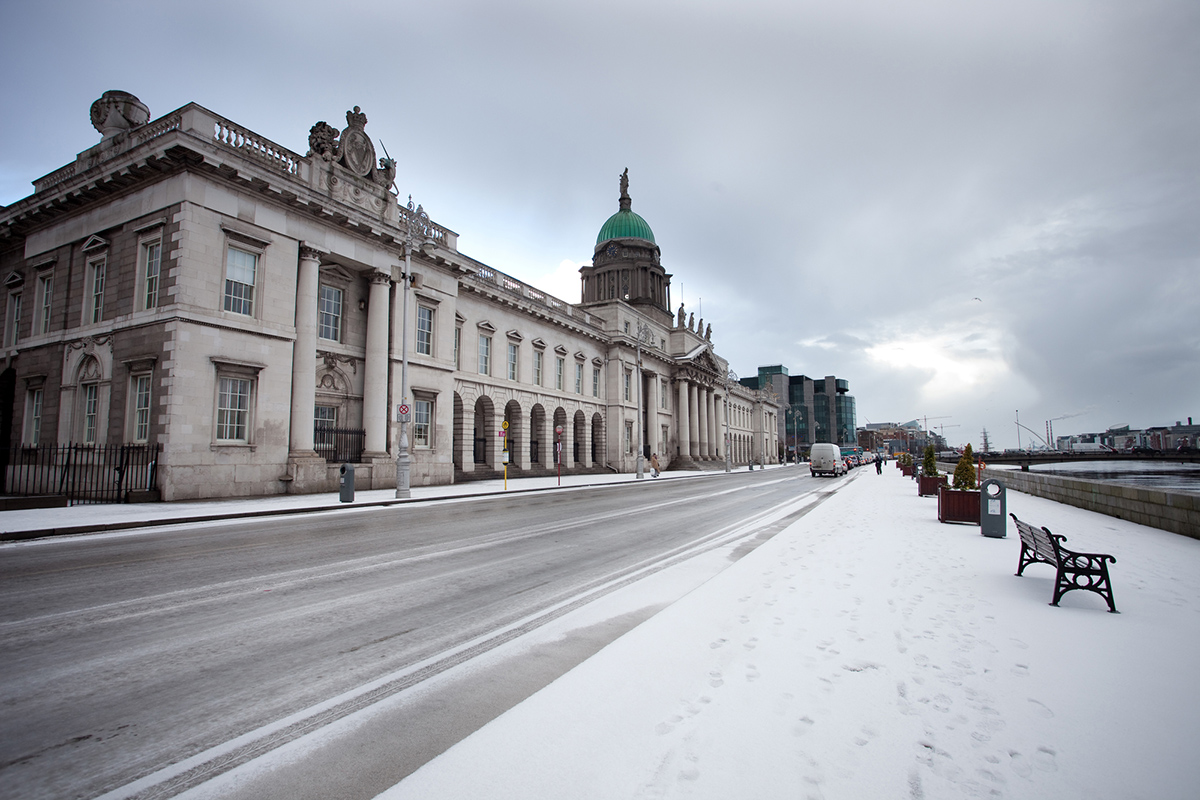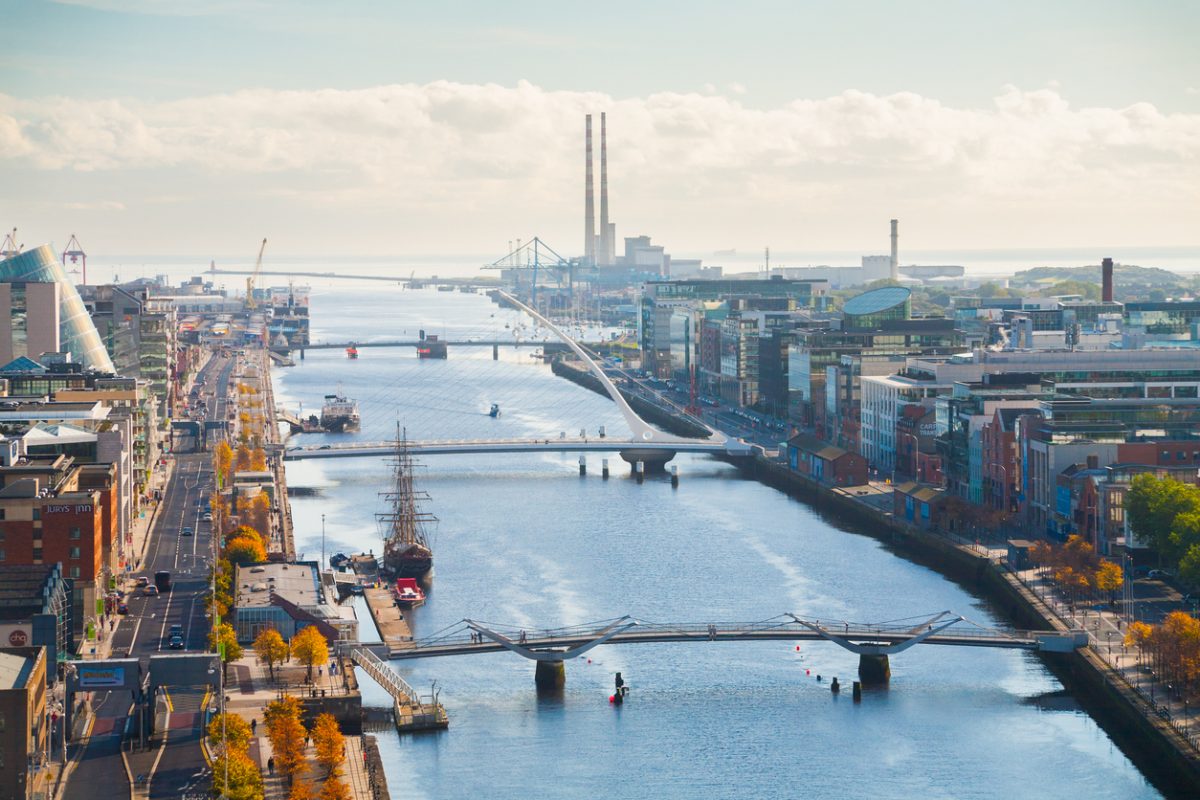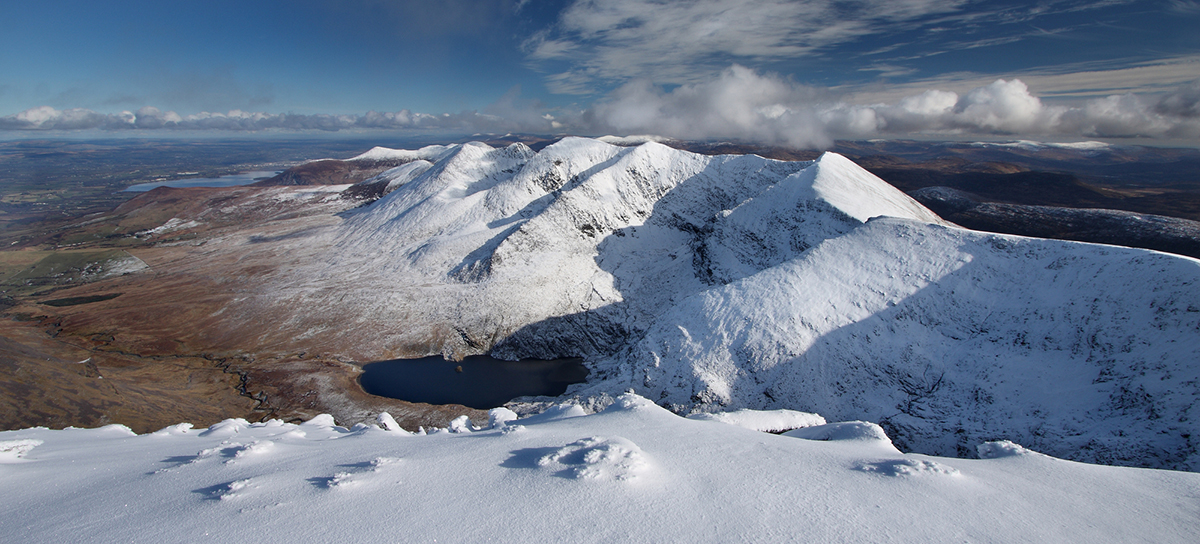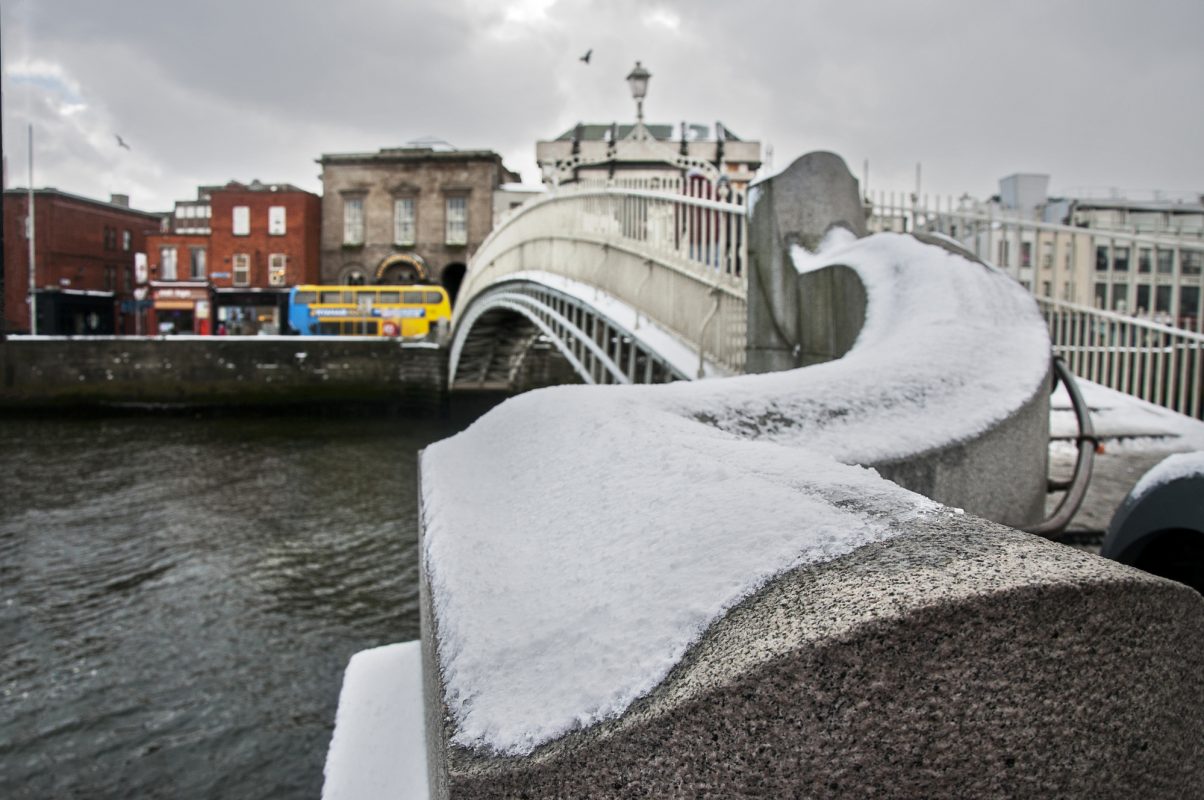Does it snow in Dublin? What can you expect when visiting this capital in the winter?
It can snow in Dublin, but it’s very rare.
Usually you can expect to see drizzle and clouds if you’re visiting Dublin in the winter – but no rain.
In fact, it’s a lot milder than most continental locations.
Here’s everything you need to know about Dublin snow!
Does it snow in Dublin?

It does snow in Dublin, but it’s by no means frequent!
The city has a temperate maritime climate – so winters are milder compared to other European capitals.
Snowfall usually happens between late November and early March, but it’s definitely not a given every year.
When it does snow, the accumulation is often minimal – rarely exceeding a couple of inches.
In fact, snowfall tends to be fleeting, with the ground often too warm for the snow to settle for an extended period.
So you’re more likely to see slushy roads than a snow-covered winter scene!
It does snow more in the Wicklow Mountains, which are just over an hour’s drive away from Dublin and.
So if you’re keen to experience more significant snowfall, you might have more luck here!
They’re considered the snowiest place in Ireland, but they’re not the Swiss Alps – snow’s still relatively rare here.
Just remember to check the weather forecasts and road conditions if you decide to make the trip.
When does it snow in Dublin?
Snow is most likely in Dublin in the winter months – December, January or February – but it’s not really reliable even during this time.
Does it snow in Dublin in November?
While snowfall in November is relatively rare, it’s not entirely out of the question!
However, if it does snow, the ground is usually too warm for any significant accumulation.
So, you might see some flurries but don’t expect a winter wonderland.
Does it snow in Dublin in December?
December sees a slightly higher likelihood of snow, aligning with the overall drop in temperatures.
Still, the snow is usually minimal and often melts upon contact with the ground.
Does it snow in Dublin in January?
January is one of the coldest months in Dublin and comes with a better chance of snowfall.
The snow can occasionally accumulate, but this is more the exception (aka every few years) than the rule.
Does it snow in Dublin in February?
Like January, February is also a month where you could reasonably expect some snow.
However, similar to other winter months in Dublin, significant accumulations are rare, and the snow is often quick to melt.
Does it snow in Dublin in March?
By the time March rolls around, the likelihood of snow starts to decrease.
While it’s still possible to see some snow, especially in the early part of the month, the approach of spring generally means milder conditions.
Why doesn’t it snow much in Dublin?

Dublin’s scarcity of snow can be attributed to its temperate maritime climate which is strongly influenced by the North Atlantic Drift.
This oceanic system brings warmer waters from the Caribbean to Ireland’s west coast, moderating temperatures and keeping them milder than other locations at similar latitudes.
The presence of the Wicklow Mountains in the south also plays a role.
These mountains can block cold air masses, diverting them away from the city and reducing the chance of snowfall.
When it does snow in Dublin, it’s often because cold air from the Arctic or Eastern Europe has temporarily overridden these milder influences.
Another factor is the city’s low elevation. Dublin sits at a relatively low altitude, meaning there’s less chance for temperatures to drop to the point where snow could form and accumulate.
Even when it does snow, the ground often isn’t cold enough for the snow to stick for a significant amount of time.
Finally, Dublin’s proximity to the sea means it receives a fair amount of rainfall.
While this precipitation could theoretically turn into snow, the maritime influence keeps winter temperatures just high enough to favour rain over snow most of the time.
When did it snow most in Dublin?

So, when did Dublin actually see snow? 2018, 2010, 1982 and 1947 stick in local’s minds.
The “Beast from the East” in 2018
In 2018, the “Beast from the East” swept through the UK and made its presence felt in Dublin as well.
Although Dublin didn’t bear the brunt of this weather event, it did snow a little.
The Wicklow Mountains, for example, were blanketed with as much as 60cm of snow!
This event significantly impacted transport and daily life in the city.
Winter of 2010
Winter of 2010 saw an unusual cold snap that began in late November.
Originating from Southern Sweden, the snowstorm reached the British Isles and had consequential effects on Dublin.
On November 26, a thunderstorm damaged electrical systems and flooded roads, disrupting transport services, including train operations in Dublin.
The main runway at Dublin Airport was also closed due to snow and ice for most of the day.
During December 2010, Dublin Airport and the City of Derry Airport were forced to shut down.
Dublin Airport recorded 15 cm (6 inches) of snow, making it one of the most substantial snowfalls in the area for quite some time!
The Big Snow of 1982
A record-breaking winter took place in Ireland during January and February 1982, often referred to as the “Big Snow.”
The snowfall was so intense that Dublin Airport had to close.
Meteorological records suggest that this extreme weather was due to a mixture of cold Arctic air and moisture-laden systems from the Atlantic.
Dublin was one of the many areas affected, where schools were closed, public transport halted, and daily life came to a standstill.
Winter of 1947
Long before 1982, the winter of 1947 set a snowfall record that still stands today.
The blizzard began on February 23 and continued well into March, with Dublin experiencing an unprecedented 50 consecutive hours of snowfall.
Temperatures plummeted to a chilling -15°C, and snowdrifts reached up to 6 meters high. These extreme conditions stopped life in Dublin entirely; transport ceased, and communities were left without electricity or water.
Typical winter temperatures in Dublin
Here’s a table with the typical winter temperatures in Dublin. As you can see, it’s rarely cold enough to snow!
| Month | Average High (C) [F] | Average Low (C) [F] |
|---|---|---|
| November | 9°C [48°F] | 3°C [37°F] |
| December | 7°C [45°F] | 1°C [34°F] |
| January | 6°C [43°F] | 1°C [34°F] |
| February | 7°C [45°F] | 1°C [34°F] |
| March | 9°C [48°F] | 3°C [37°F] |
So, does it snow in Dublin?
Count yourself lucky if you see snow in Dublin – it’s not at all common! However, a winter trip here’s well worth enjoying – check out my full guide for more information.

